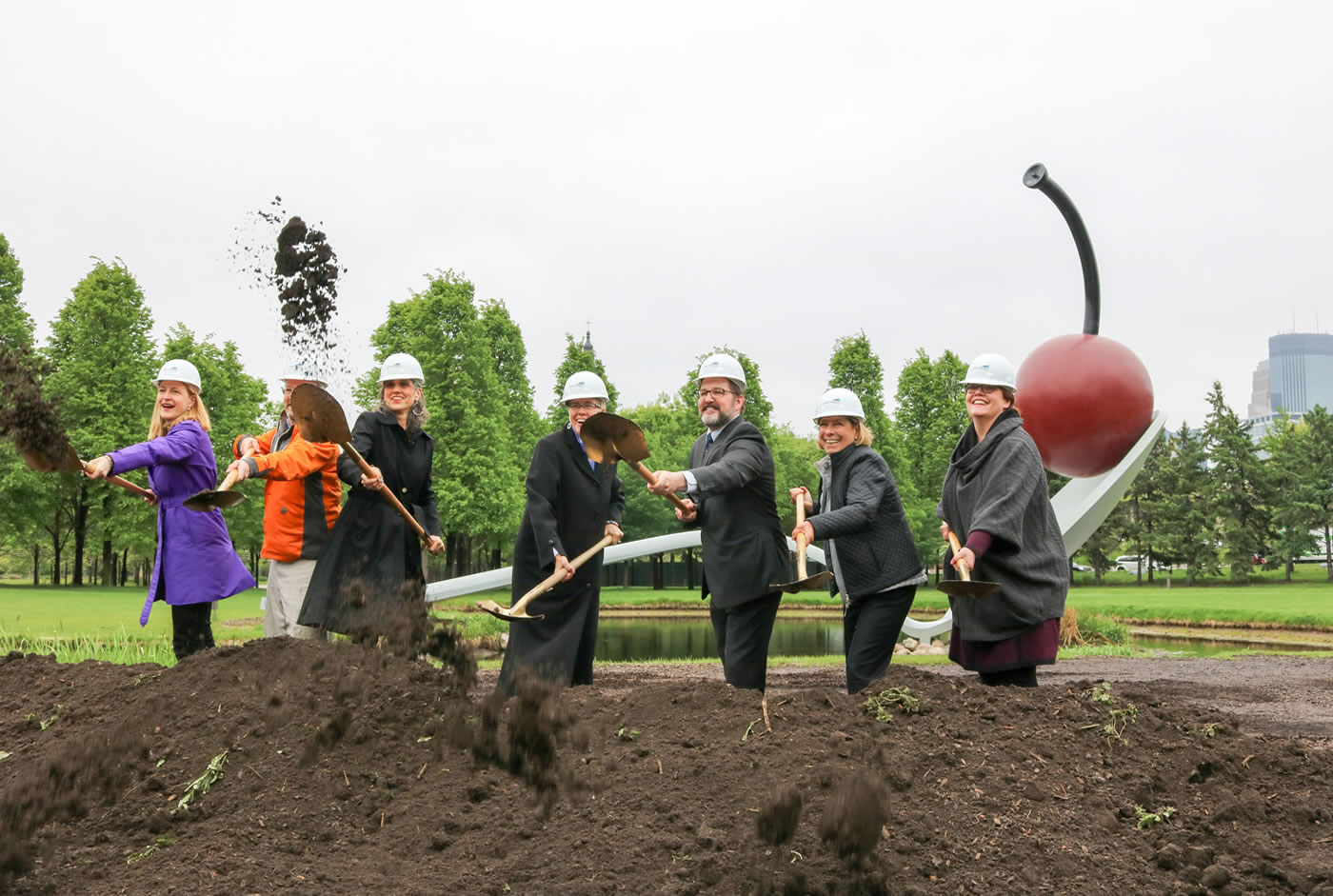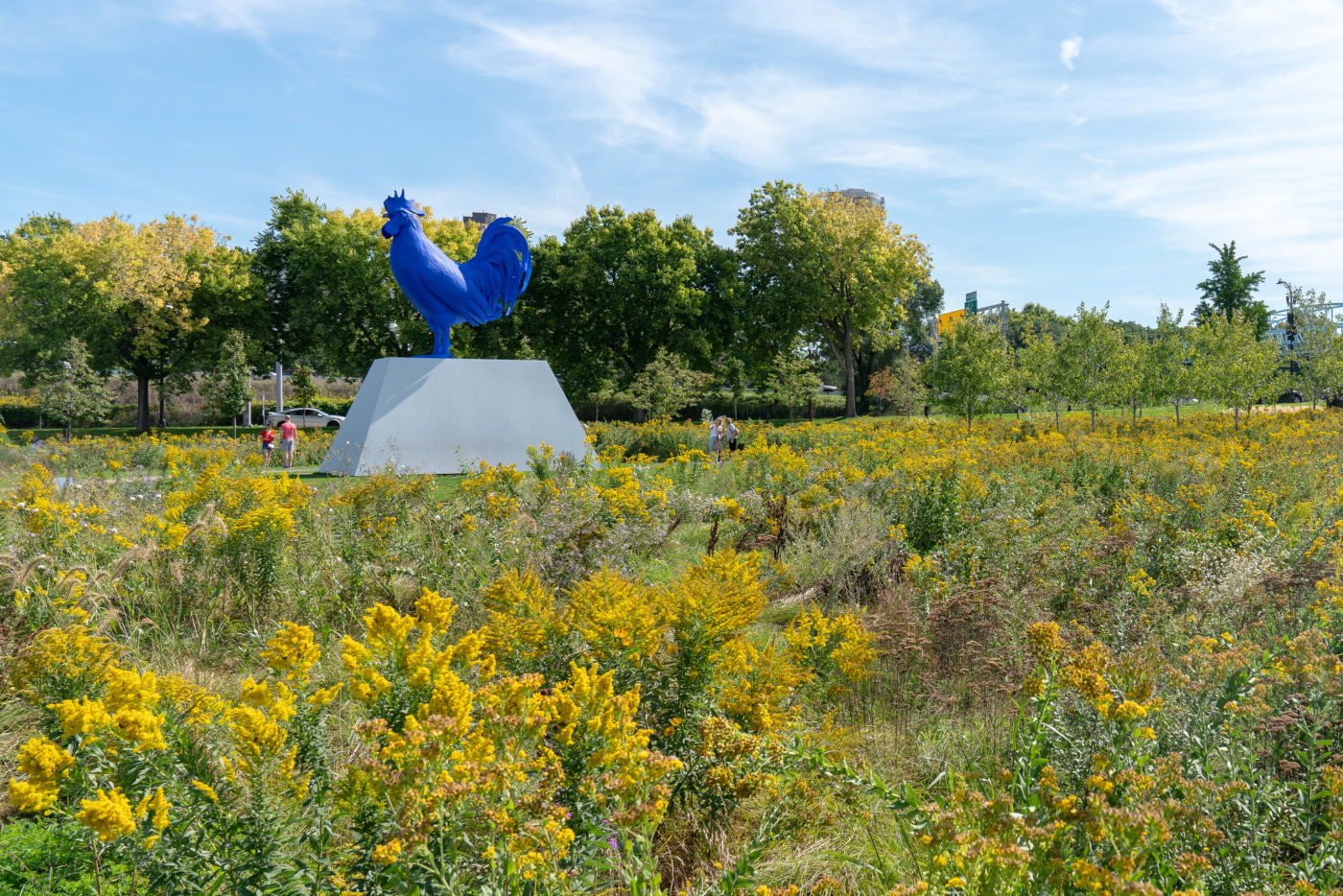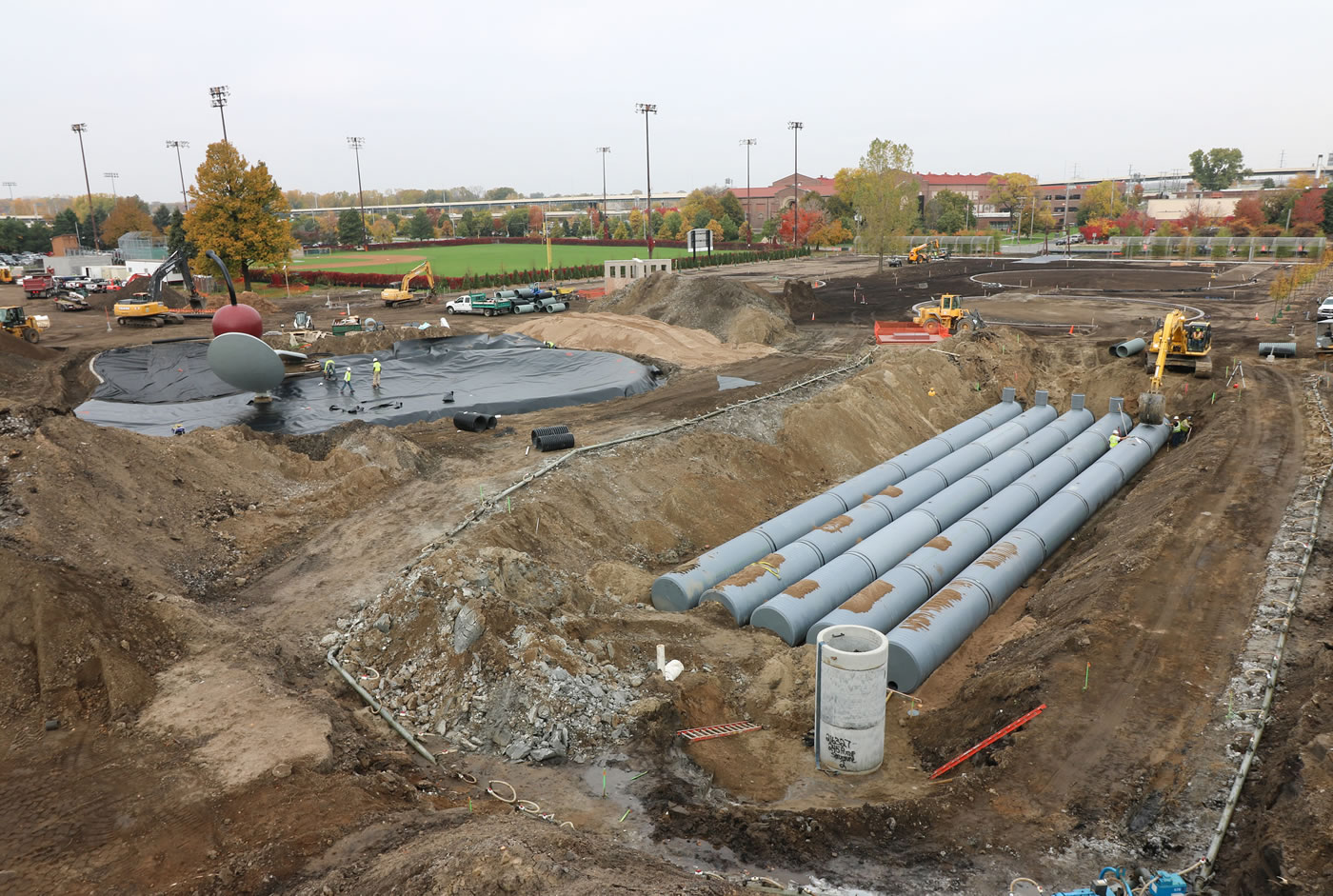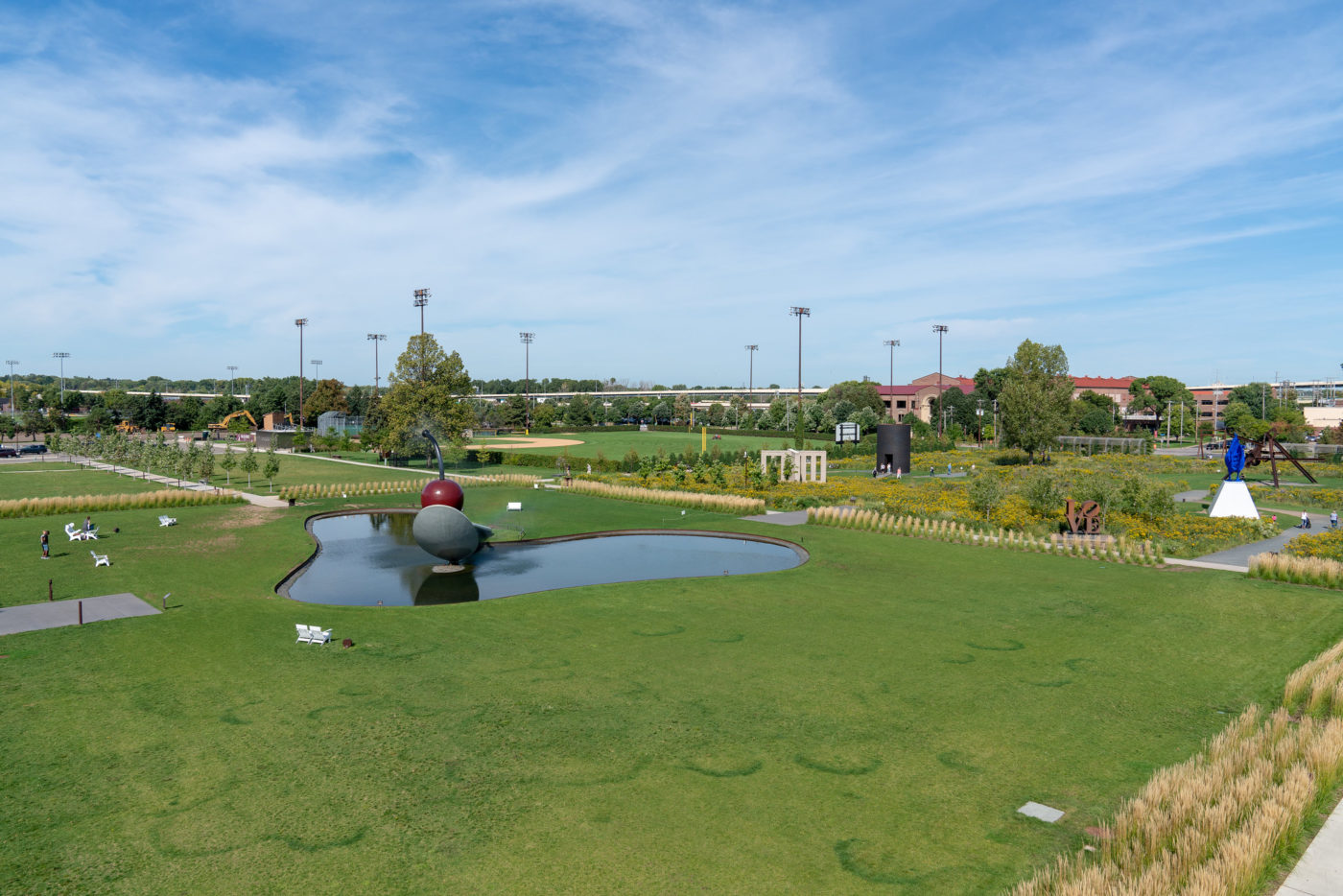Minneapolis Sculpture Garden Reconstruction
The iconic Minneapolis Sculpture Garden was rebuilt with a stormwater reuse system and sustainable, eco-friendly landscape features.
Project Details
City: Minneapolis
Type: MWMO Capital Project
Status: Completed
Timeline: 2016-2017
MWMO Funding: $1.5 million
Partners: Minneapolis Park & Recreation Board, Walker Art Center
Nancy Stowe
Projects and Outreach Director
612-746-4978
Email Nancy Stowe
View Bio
The MWMO worked in partnership with the Minneapolis Park and Recreation Board and the Walker Art Center to reconstruct the Minneapolis Sculpture Garden with sustainable landscape features that embrace the site’s natural hydrology. The MWMO provided a $1.5 million Capital Project Grant to fund native plants, enhanced turf, engineered soils, and a unique water reuse system built around the famous Spoonbridge and Cherry sculpture.
Built on a former wetland, decades of use had left the site in need of serious repairs. Over the years, humans fought the wet soils with no success. The National Armory attempted to build on the north end of the field, but was torn down in 1935 as the building sank into the wet ground. The Sculpture Garden faced similar issues, as the soil could not bear the weight of the sculptures and the millions of visitors.
The reconstructed landscape better accommodates the site’s wetland past. The garden’s redesigned north end features a “fresh meadow” filled with deep-rooted, pollinator-friendly native plants that love moist soils and will help manage stormwater. Engineered soils throughout the site are designed to improve its drainage and stability, preventing the erosion that was occurring in the old garden.
The new water reuse system irrigates the site and conserves an estimated 4.7 million gallons water each year. Water from the Spoonbridge and Cherry fountain is collected in an 80,000-gallon underground cistern and then used to irrigate both the garden and the adjacent baseball field. The system will keep nearly 5 million gallons from flowing straight through stormsewers into the Mississippi River each year.
The water reuse system, the engineered soils, fresh meadow and enhanced turfgrass will work together to improve the aesthetics, accessibility and long-term stability of one of the state’s most visited destinations. Interpretive signage throughout the site will educate hundreds of thousands of visitors each year about the benefits of the reuse system and native landscape.




